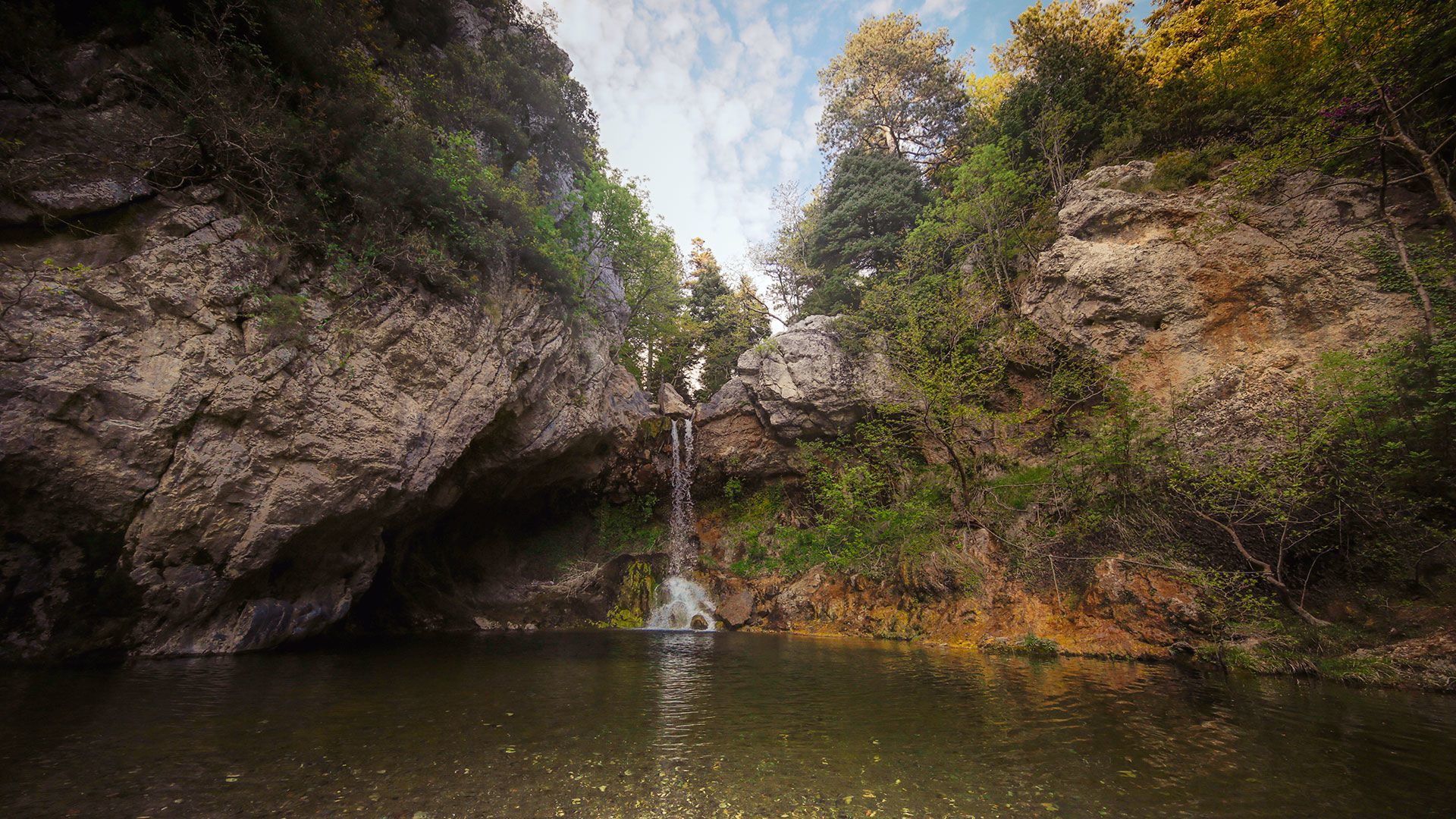This website uses cookies so that we can provide you with the best user experience possible. Cookie information is stored in your browser and performs functions such as recognising you when you return to our website and helping our team to understand which sections of the website you find most interesting and useful.
Around Evia
North, south or central? Whichever route you choose, touring Evia will be a delight. To the north, you’ll find fragrant pine forests, old monasteries (such as Galataki and Osios David), the beautiful settlement of Limni Evias, the Drimonas waterfalls and the thermal springs of Edipsos. In central Evia, there is the alpine landscape of Dirfis.
Sumptuous beaches dominate the northeast, along with the medieval towers at Messapia and the Byzantine churches at Avlonas. To the south, discover the land of the winds with the enigmatic drakospita (dragon houses), the Ohi mountain range and the enchanting Dimosaris Gorge, and visit the archaeological treasures of Eretria and the medieval castles at Aliveri, Stira and Karistos.
The best beaches
There are fantastic beaches seemingly hidden around every bend on Evia – Edipsos, Politikon, Limnionas, Kavos, Gregolimanos and, of course, everyone’s favourite, Agia Anna-Agkali to the north. Further south, you’ll find Hiliadou, with its lush vegetation, sand and pebbles of every shape and size and a sea cave just begging to be explored.
The beach took its name from the small Byzantine church of Panagia Hiliadou (meaning the thousandth) as, according to tradition, this was the thousandth church built by Empress Theodora.
Nearby, you’ll also find Mourteri beach, loved by wind- and kite-surfers, Eretria beach and Agios Merkourios, Kalamos and Korasida. And to the south are the beaches of Nea Stira, Limnionas Stiron, Chrysi Ammos and the popular Figia.
Revitalising thermal springs
The Edipsos Springs were renowned in antiquity for the unique properties of their waters. To the never-ending line of emperors and Roman generals who visited the baths, you can add 19th and 20th century prime ministers, writers and dignitaries.
And as well as immersing yourself in the healing waters, you’ll admire Thermae Sylla – a neoclassical masterpiece built around an impressive tower – and the old baths designed by renowned architect Ernst Ziller.
The shifting tides of Chalkida
The town of Chalkida never fails to draw attention because of the peculiar behaviour of the water passing under its bridge, which changes direction seemingly on a whim every six hours. The reason for this phenomenon? The moon’s gravity, as well as the difference in sea level between the north and south Evoikos Gulf.
Fresh fish and seafood, long promenades along a waterfront lined with cafes and restaurants, sights such as the Kokkino Spiti (Red House) of 1884, the House with the Statues, the Archaeological Museum and the Mayor’s Hall (whose architecture features baroque and Italian elements), all make up the unique character of Evia’s main town.
A bridge to behold
The new Chalkida Bridge, connecting Evia with the mainland since 1992, is a masterpiece. The first cable-stayed suspension bridge in Greece, it is almost 700m long and (at its highest point) 35.5m tall. Its pylons rise to 90m, carrying a road suspended by 144 wire cables. You’ll admire it from all angles, particularly at night when it is lit up.
Striking gold at Cavo Doro
Awe is the first word that comes to mind when coming upon one of the most difficult passages of the Greek seas. No matter how calm the weather is, at Cape Kafireas (Cavo Doro) the wind is always inclined to put on a bit of a show.
It is claimed that gold coins from Byzantine shipwrecks still wash up on nearby shores – hence the name Doro (from gold). You can reach the cape at the southeast tip of Evia by road or renting a boat from Karistos.
Source : https://www.discovergreece.com/central-greece/evia



